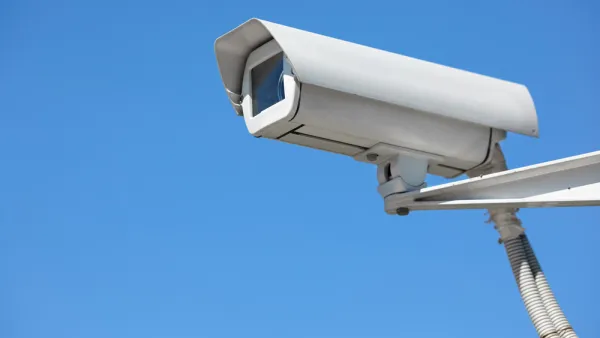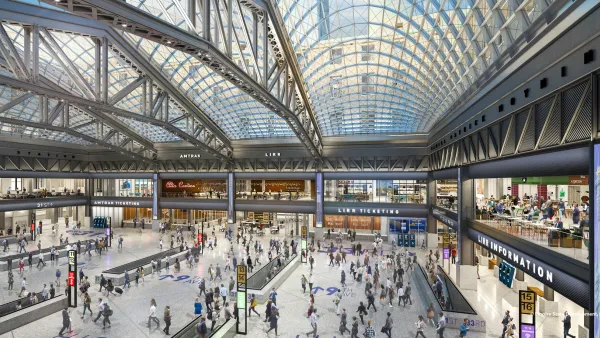Rail travelers are not subject to the same degree of security measures as air travelers according to security experts, reports Ron Nixon for The New York Times. Yet far more travel by rail than plane, and rail has been a terrorist target abroad.
"Since the attacks of Sept. 11, 2001, the federal government has spent hundreds of billions of dollars to protect transportation systems, mostly at airports," writes Ron Nixon. "But security experts say the overwhelming focus on aviation leaves security gaps in other modes of transportation."
Rail facilities [including train stations], in particular, remain vulnerable to terrorist attacks, these experts say.
Readers may remember the August terrorist attack on a high-speed Thalys train speeding at 186 mph from Amsterdam to Paris that was foiled by three Americans and a Brit. Tom Ridge, the first Homeland Security secretary, referenced that attack:
“By nature, I’m not an alarmist, but when you see the attempted attack on the train in Europe that was stopped by the three Americans, it would be cavalier of us to think it won’t happen here,” Ridge said.
A Congressional report [PDF] released last month did include rail facilities, but the measures "'tend to emphasize managing the consequences of an attack,' rather than the risks," writes Nixon.
We have primarily focused on aviation because Al Qaeda and now ISIS have focused on aviation,” said Representative Michael McCaul, Republican of Texas and chairman of the Homeland Security Committee. “Soft targets are more difficult. I mean, you can’t just shut down the New York subway system.”
The Transportation Security Administration (TSA), the main agency responsible for protecting transportation systems, dedicates just 2 percent of its budget and a similar proportion of its staffing to security outside airports, according to T.S.A. documents.
Air travel is clearly greatly vulnerable to terrorism, as demonstrated by the Russian plane that crashed over the Sinai Peninsula in Egypt on Oct. 31, killing all 224 people on board, as it was allegedly brought down by a bomb that fit into a soda can, according to ISIS claims.
However, while perhaps not as vulnerable as a plane traveling at 30,000 feet, far more travel by rail than by plane.
Passenger trains in the United States, including subways and other commuter rail, carry about five times as many passengers as do airlines—about 12 million a day—over thousands of miles of track, serving stations that are designed to provide easy access. But security experts say that this ease of access also provides an inviting target for would-be terrorists.
Rail has emerged as a leading potential terrorist target after a series of attacks in the last decade in Madrid, London, and Tokyo that together left more than 100 people dead.
- Madrid train bombings of 2004: "10 bombs exploded on four trains in and around Atocha Station in the city’s centre, leaving 191 dead and more than 1,800 injured," write the editors of Encyclopædia Britannica.
Both the Spanish government and the Spanish media immediately attributed the bombings to ETA, a Basque separatist organization. This display of unity rapidly broke down, however, as the police investigation began to focus on the Islamist militant group al-Qaeda.
In October 2007, 18 Islamic fundamentalists of mainly North African origin and three Spanish accomplices were convicted of the bombings (seven others were acquitted), which were one of Europe's deadliest terrorist attacks in the years since World War II.
- London bombings of 2005: "(C)oordinated suicide bomb attacks on the London transit system on the morning of July 7, 2005," writes Michael Ray for Encyclopædia Britannica. 52 people were killed and "(m)ore than 700 people were injured in the four attacks."
The four bombers—characterized as “ordinary British citizens” in the subsequent investigation—carried out the attacks using inexpensive readily available materials."
In September 2005 al-Qaeda deputy leader Ayman al-Zawahiri claimed partial responsibility for the bombings, but the extent and nature of al-Qaeda’s true role in the attacks remained murky.
- Tokyo subway attack of 1995: "(C)oordinated multiple-point terrorist attack on March 20, 1995, in which the odourless, colourless, and highly toxic nerve gas sarin was released in the city’s subway system," writes Kenneth Pletcher for Encyclopædia Britannica.
The attack resulted in the deaths of 12 (later increased to 13) people, and some 5,500 others were injured to varying degrees. Members of the Japan-based new religious movement AUM Shinrikyo (..) were soon identified as the perpetrators of the attack.
"Mr. McCaul said the presence of T.S.A. security teams and canine units from Amtrak and other agencies was the best that could be done without bringing transit systems to a halt," adds Nixon.
TSA does run a voluntary program in which it recognizes transit agencies for the commitment to security. "The five agencies recognized for achieving the Gold Standard in 2014 were:
- the Washington Metropolitan Area Transit Authority in Washington, DC;
- Virginia Railway Express in Northern Virginia;
- the Metropolitan Transit Authority’s Long Island Rail [Road] in New York;
- the Pinellas Suncoast Transit Authority in St. Petersburg, Florida; and
- Hillsborough Area Regional Transit in Tampa, Florida.
Finally, a note about Amtrak travel: As for "good guys with guns stopping bad guys with guns," unless an incident occurs in the baggage car, gun-toting passengers will have to resort to other methods to stop a would-be terrorist, as the four rail travelers demonstrated in August on the Thalys train.
FULL STORY: With Its Focus on Air Travel, U.S. Leaves Trains Vulnerable to Attack, Experts Say

Analysis: Cybertruck Fatality Rate Far Exceeds That of Ford Pinto
The Tesla Cybertruck was recalled seven times last year.

National Parks Layoffs Will Cause Communities to Lose Billions
Thousands of essential park workers were laid off this week, just before the busy spring break season.

Retro-silient?: America’s First “Eco-burb,” The Woodlands Turns 50
A master-planned community north of Houston offers lessons on green infrastructure and resilient design, but falls short of its founder’s lofty affordability and walkability goals.

Test News Post 1
This is a summary

Analysis: Cybertruck Fatality Rate Far Exceeds That of Ford Pinto
The Tesla Cybertruck was recalled seven times last year.

Test News Headline 46
Test for the image on the front page.
Urban Design for Planners 1: Software Tools
This six-course series explores essential urban design concepts using open source software and equips planners with the tools they need to participate fully in the urban design process.
Planning for Universal Design
Learn the tools for implementing Universal Design in planning regulations.
EMC Planning Group, Inc.
Planetizen
Planetizen
Mpact (formerly Rail~Volution)
Great Falls Development Authority, Inc.
HUDs Office of Policy Development and Research
NYU Wagner Graduate School of Public Service



























